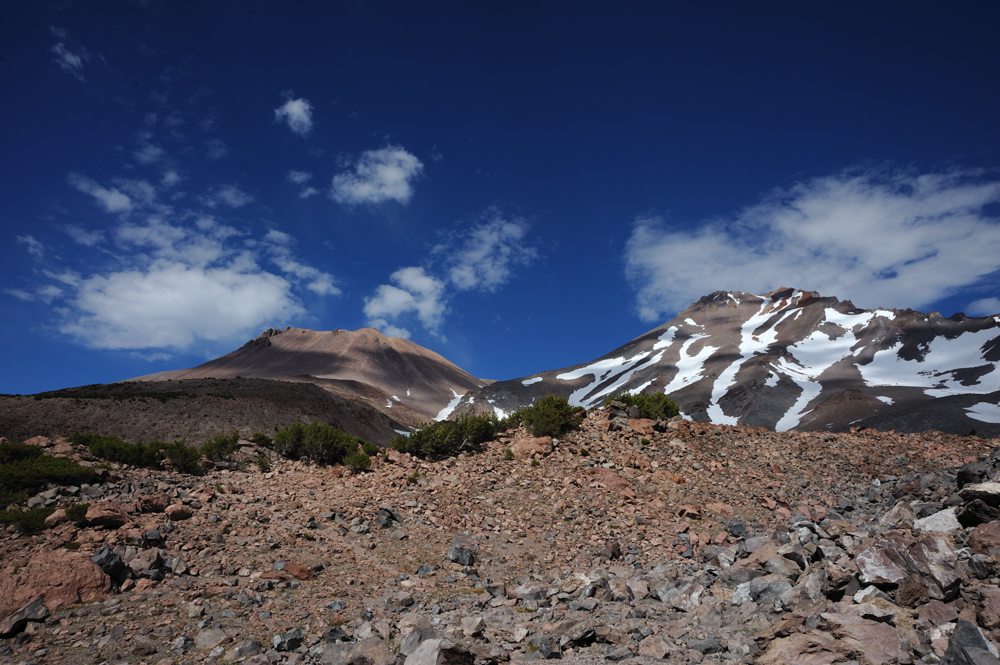
I should say that Shasta is a very popular place, and a lot of people could be met on her slopes.
First, she is relatively easily accessible for her elevation. I mean, she is not technically difficult compare to Mt Ranier, for example, that is not much higher. Well, of course, Mt Whitney also exists, but she is for pure fitness, not for climbing. As a result, many amateur climbers decide that it is a good idea to climb Mt Shasta without any real background. However, Shasta is not Mt Whitney: she can provide you with avalanches, rockfalls, whiteouts, and many other nice things. Don’t forget about altitude sickness. As a result, some people never return from Mt Shasta.
Second, Shasta is “a centre of spiritual power”. Don’t ask me, cynical agnostic, what exactly this means. However, many people believe that Shasta has some unusual power. I can understand ancient aboriginal people – huge isolated mountain should look mistic. However, nothing much changed in the present time, many groups, including Buddhist monastery, spend their time on Shasta slopes. And Lemuria! Himalai has Shambala, Atlantic ocean has Atlantida, and Shasta has Lemuria. So, many people who looking for different sort of power come to Shasta without thinking about the real physical conditions of the mountain.
All these remind me about another similar place. Not all adepts of Shambala believe that it locates in Himalai, some of them believe that its place is on Altay, and, specifically, on Mt Belukha (the highest mountain of Altay). I lived several yeasr in Altay region in my childhood and hiked a lot with my parents on Altay mountains. Belukha is slightly higher than Shasta (4506 meters) and even more technical and severe. Somewhere in the middle of 80-s, when mistico-religious literature (like Blavatskaya) become very popular in Russia, a lot of people hit their they to Belukha. A friend of my parents worked in a mountain rescue team on Belukha, and he told us about this pilgrimage. Many people came to Belukha looking for serenity. They came with small kids, wearing completely inappropriate for outdoor clothes and shoes, without tents, sleeping bags and so on. They froze, traumatized and required help. The rescue team didn’t have capacities to work with such amount of people and were horrified. Fortunately, in such a dramatic scale, it continued only for several years.
On Shasta, when we spent our evening and morning time in our camp, we also saw many interesting persons. Some people have no idea where they are going. Tents for backyards that fly away at first gush of wind, inconvenient backpacks that are too small for all stuff. One couple didn’t have a stove and was surprised that there is no water in Helen Lake. Well, they said, we will melt snow in the foil under the sun. Well, good luck. Two chaps didn’t have lights and spent three hours in the dark on the way from our camp to Helen Lake. Well, it is an additional question why this 40-minutes hike took four hours, they passed us with enough time before the sunset. I just don’t want to think about how they intended to climb the summit. Hope that they didn’t, and Helen Lake experience was enough for them.
Well, there were notes of boring traveller, and at this point for us was the time to move to Hidden Valley, from where we planned to climb Shastina. Both camps located at the same altitude (2900 metres), so we need to descent to Horse Camp, change the trail, and ascent to Hidden Valley. The easy day between two summits.
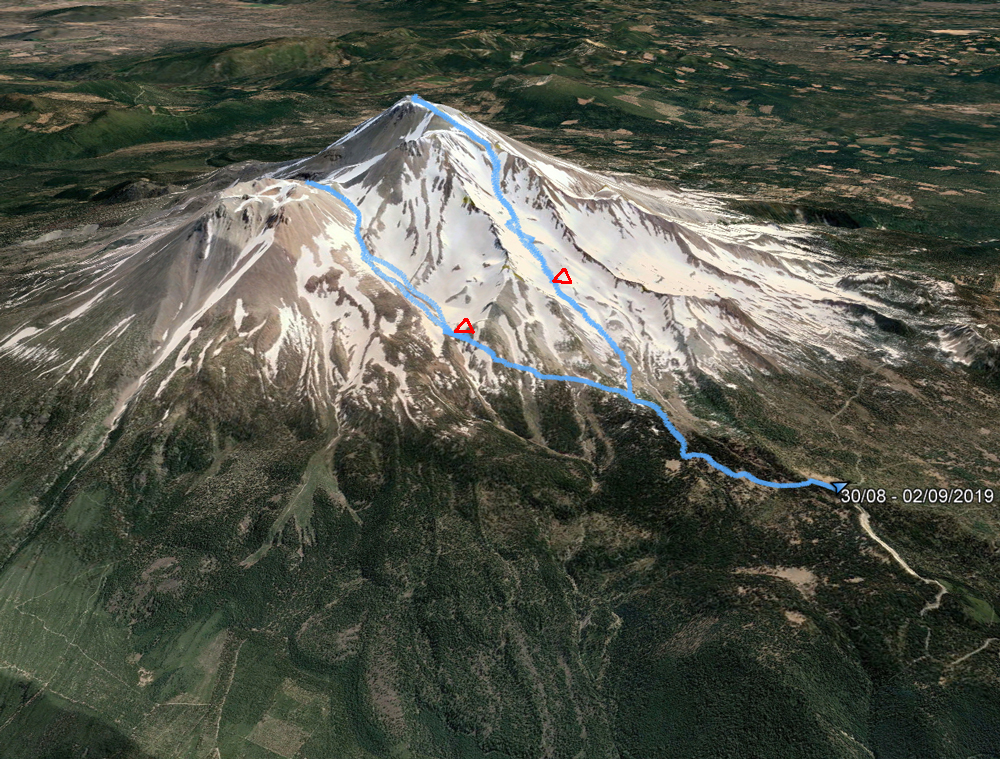
Descent to Horse Camp.
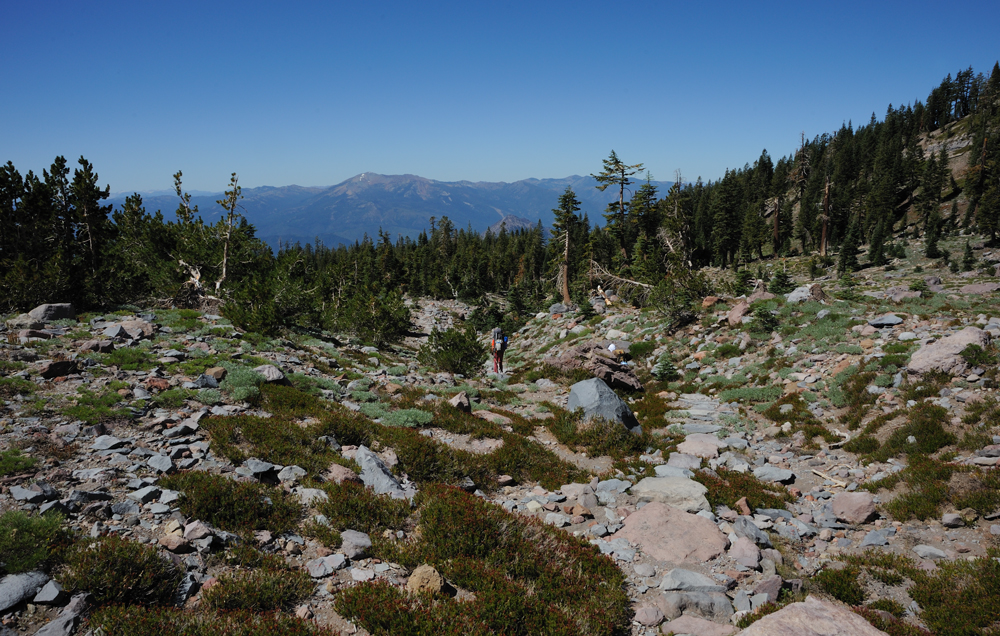
Goodby to this side of Shasta.
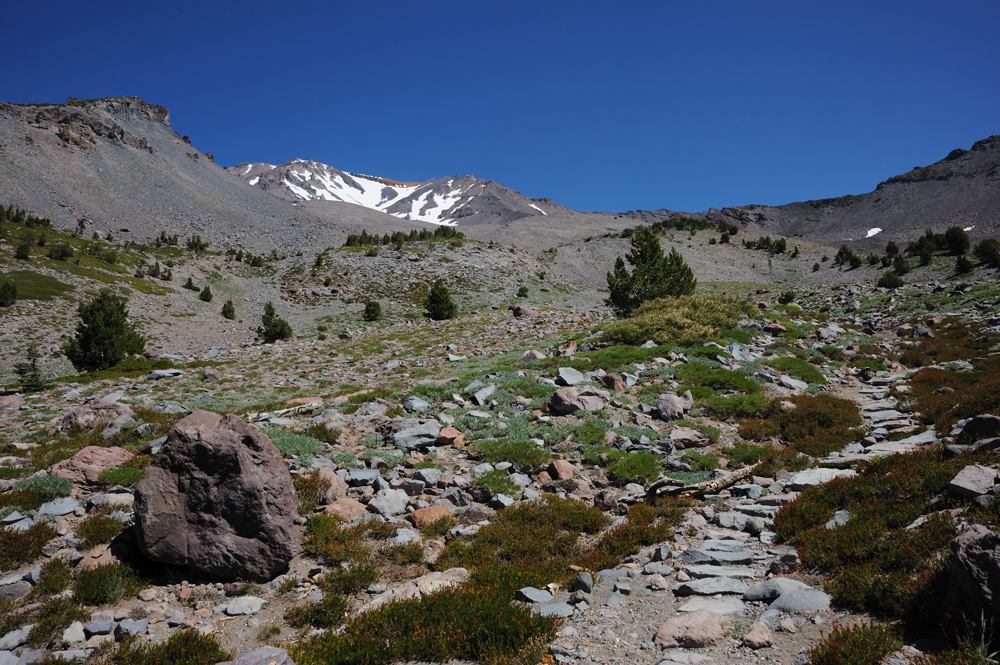
Traverse of Shasta slopes.
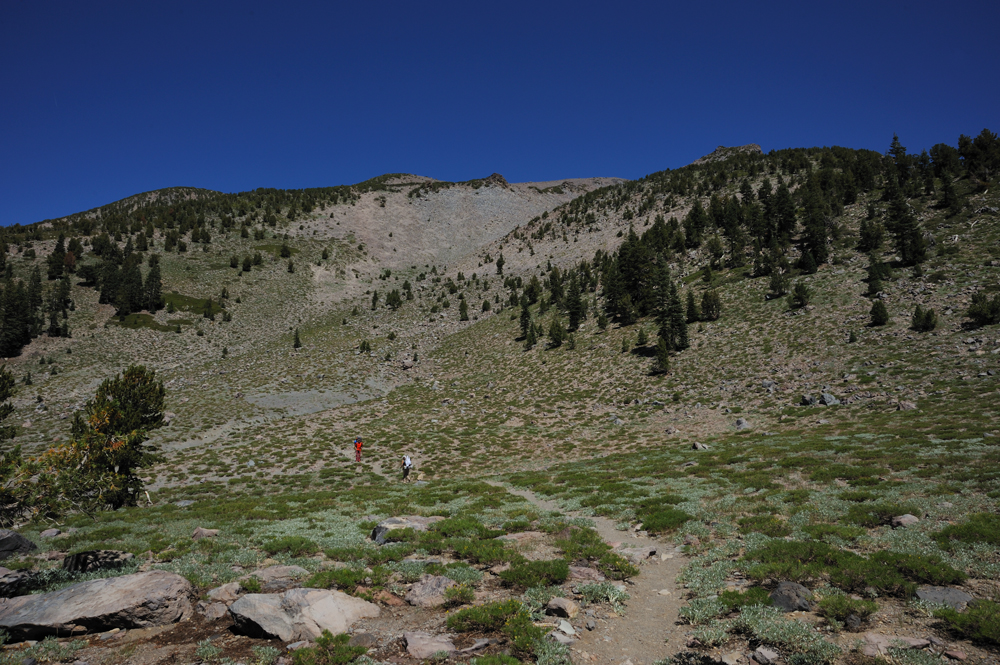
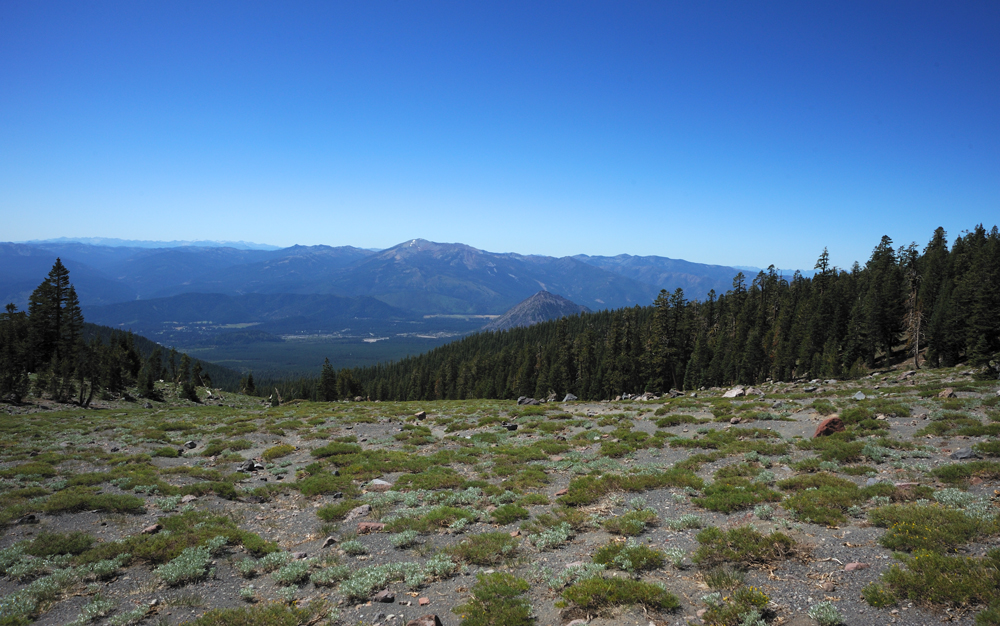
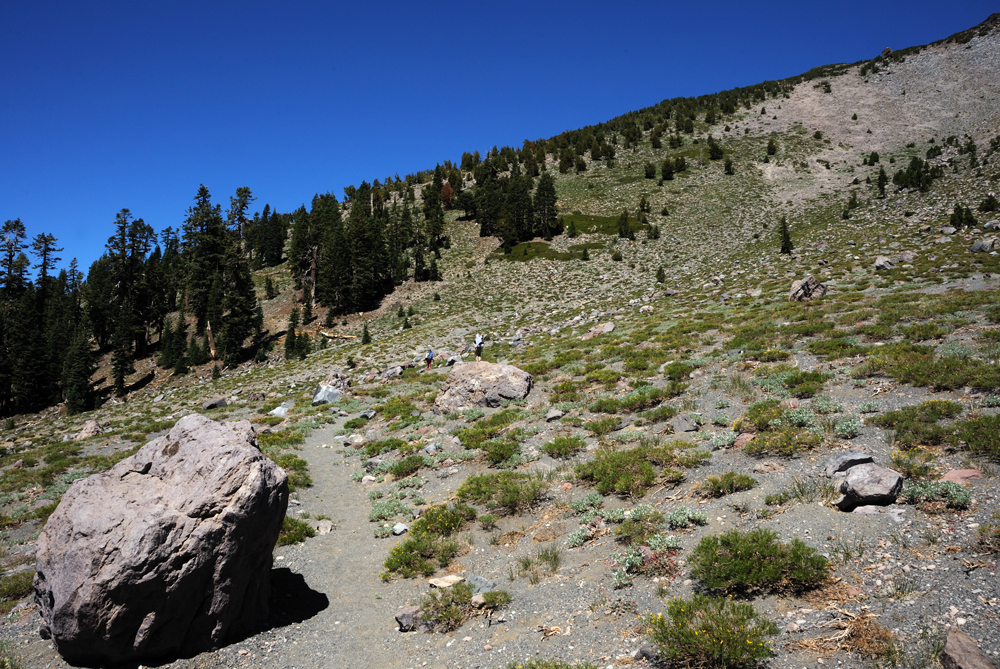
The last ascent to Hidden Valley, Shastina already can be seen.
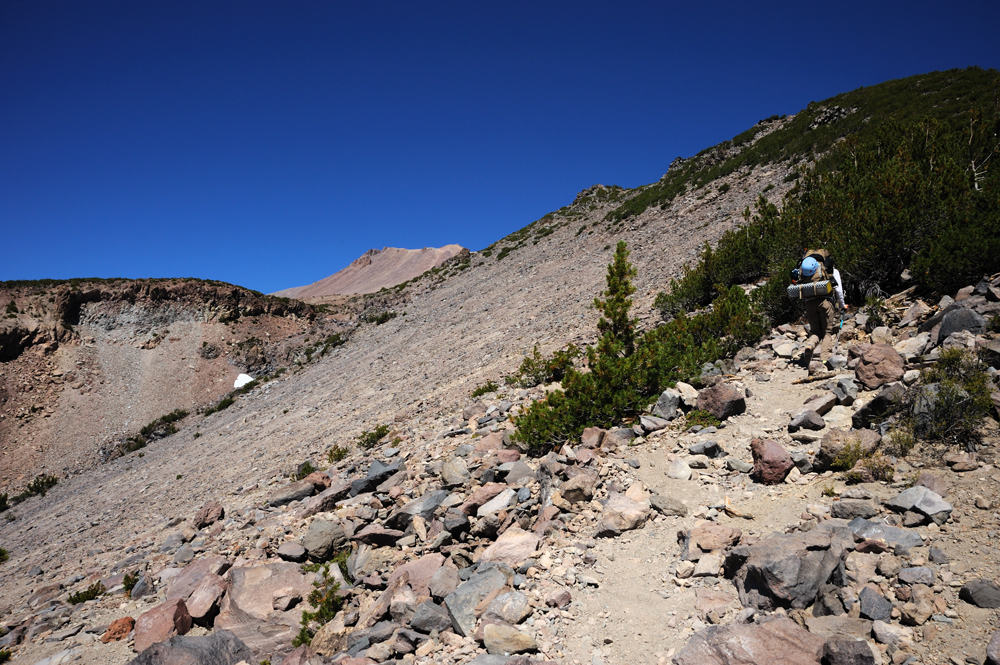
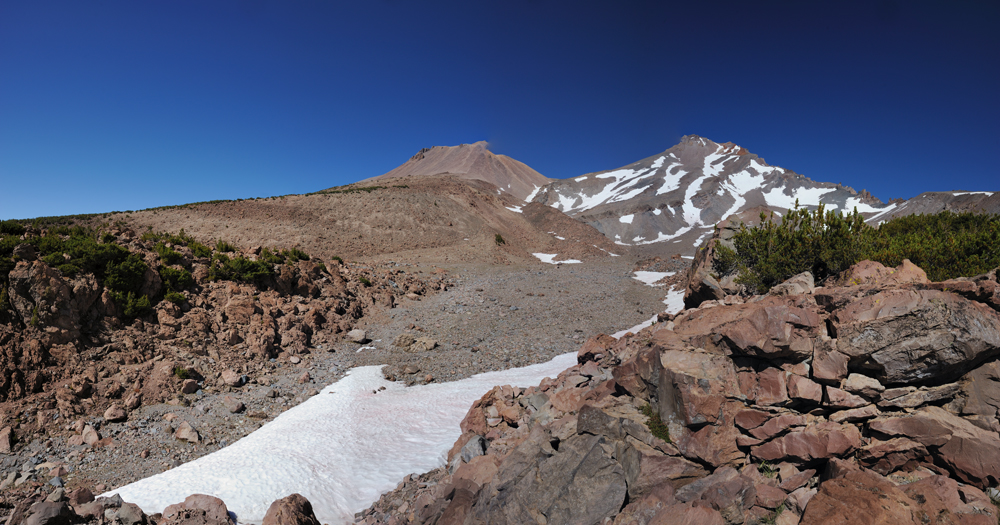
Hidden Valley is a nice and cosy place. We saw only one tent, but its occupants came from Shastina and went down, so we were alone in the whole place.
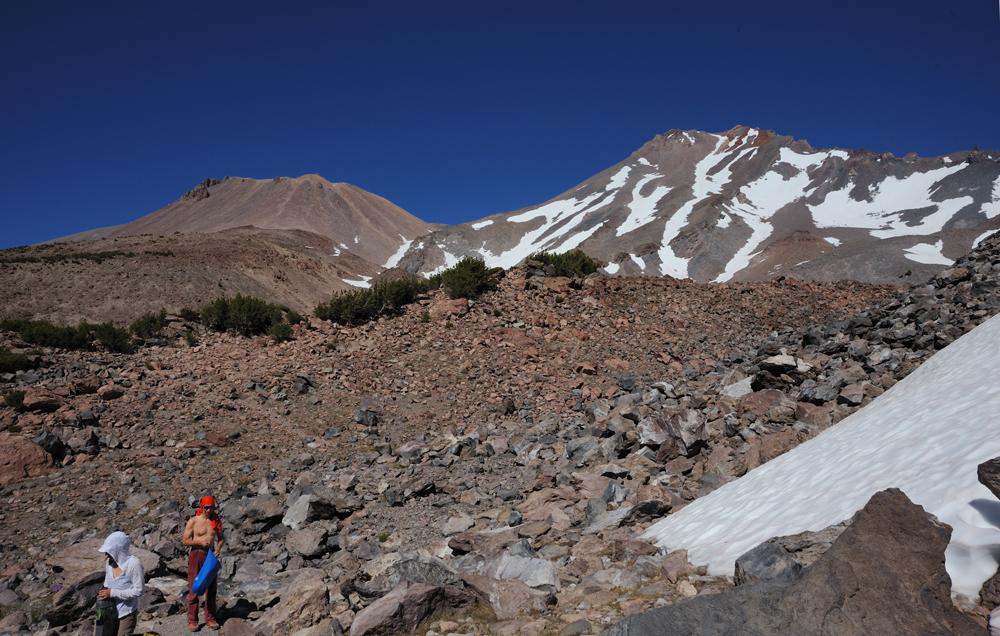
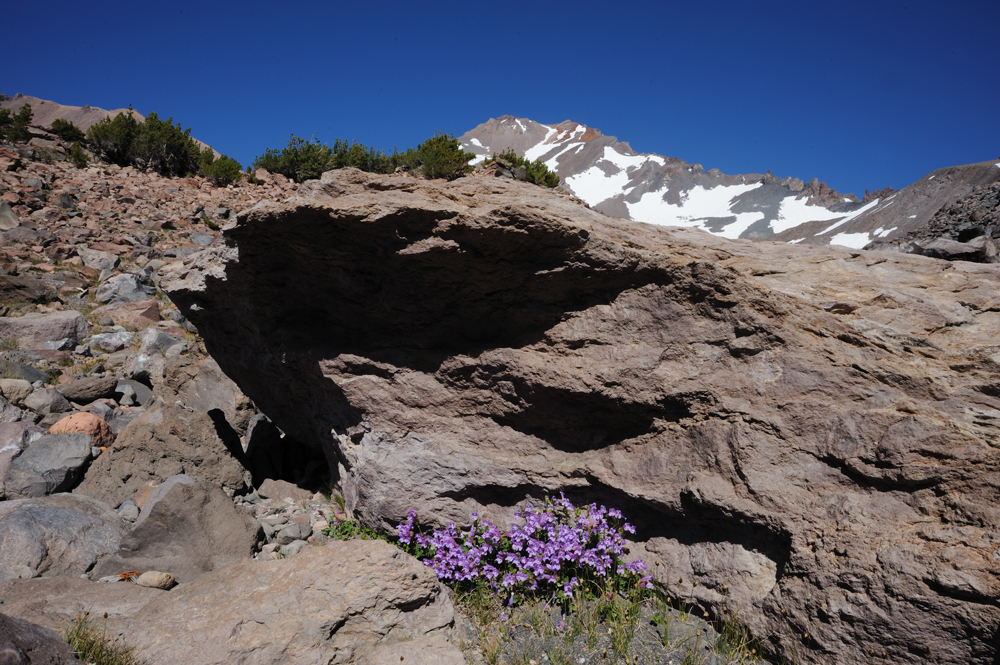
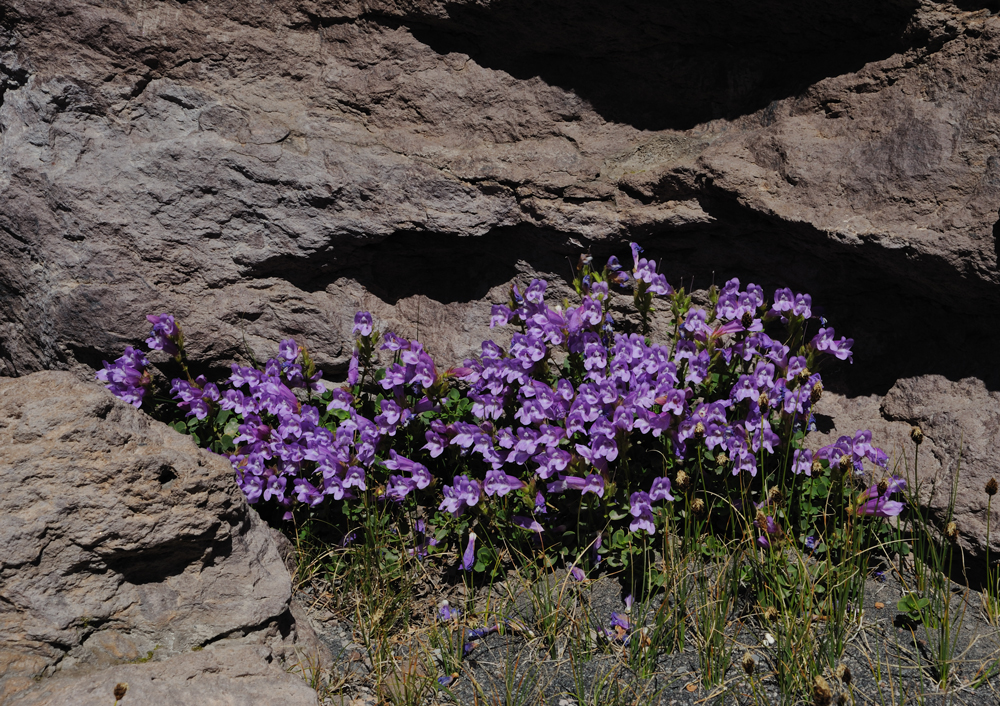
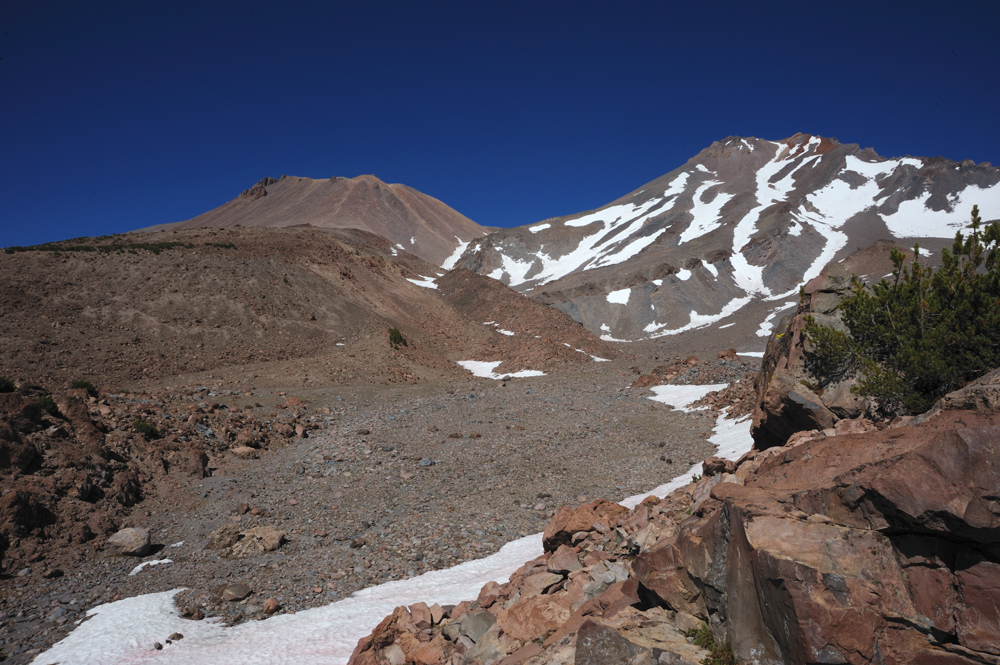
Shastina, our aim.
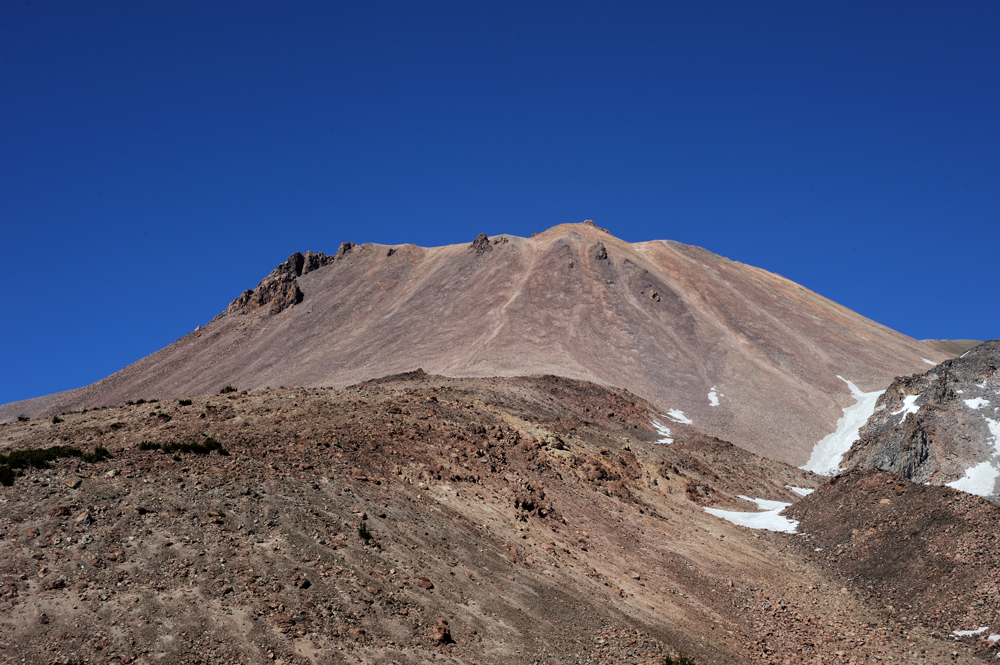
Our camp (our neighbours are still here).
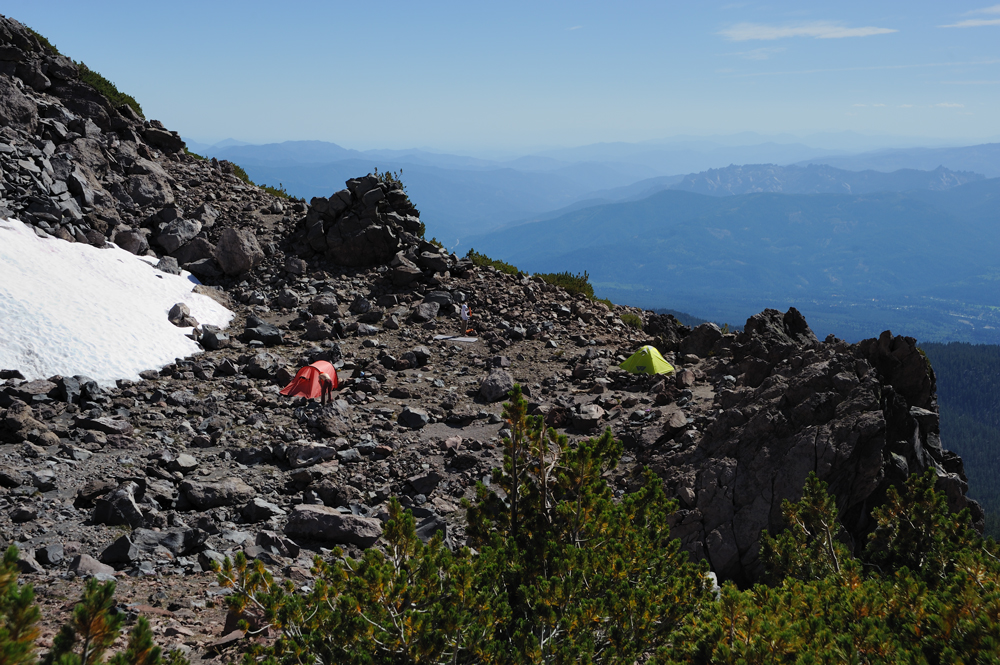
Valley below.
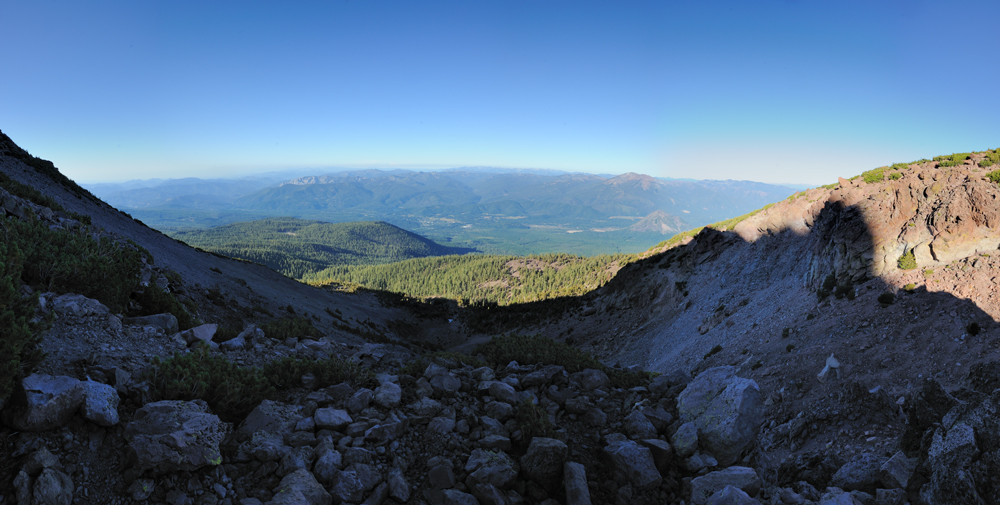
Friend Y and a skeleton of her tent.
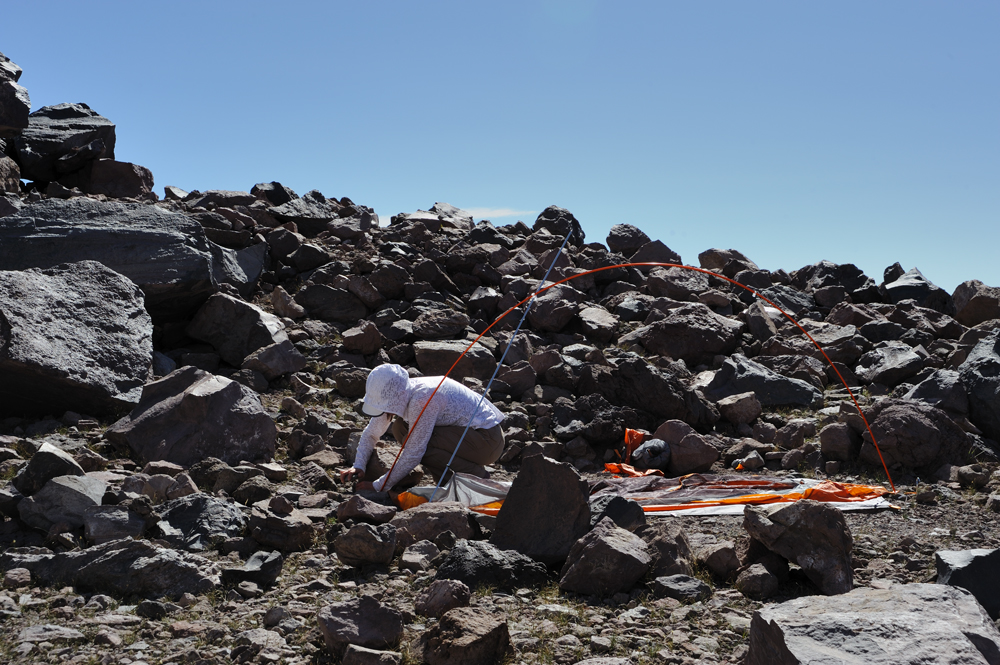
American marten came with a visit in the evening. It was already too dark, unfortunately.
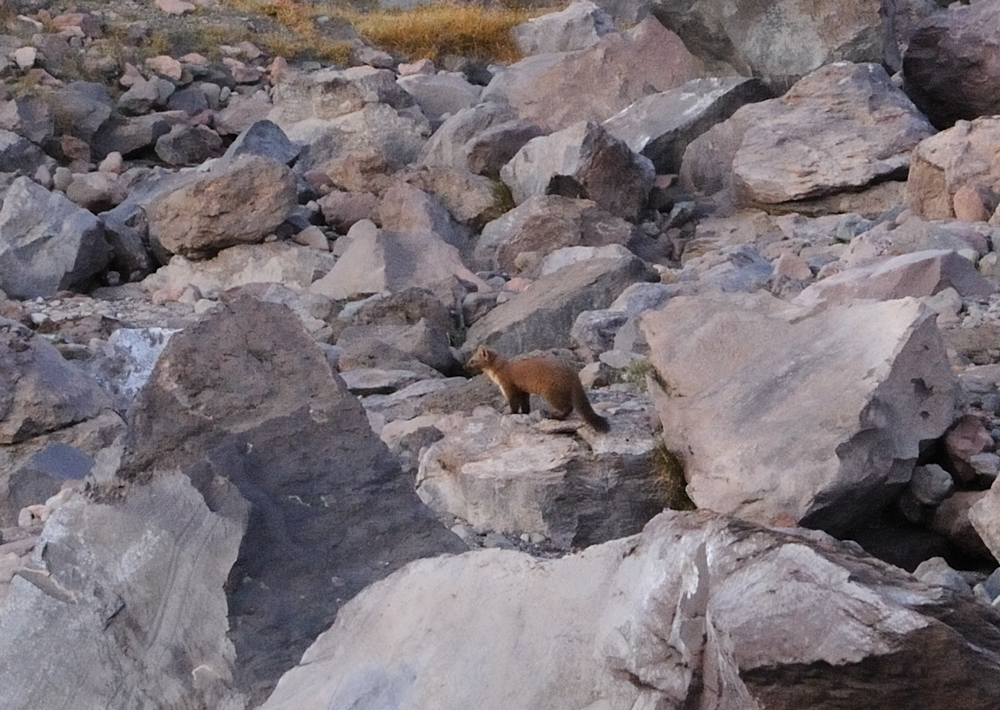
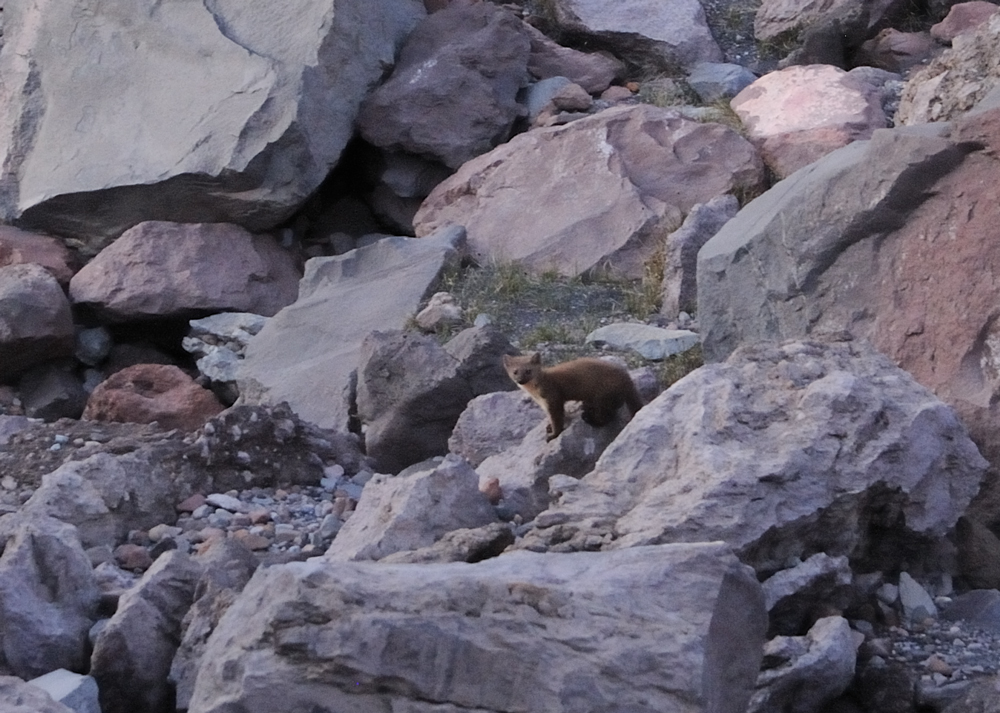
In the morning we started our way to Shastina. The name “Shastina” is a diminutive of Shasta, however, the mountain is not small, 3760 meters, a little higher than Adams.
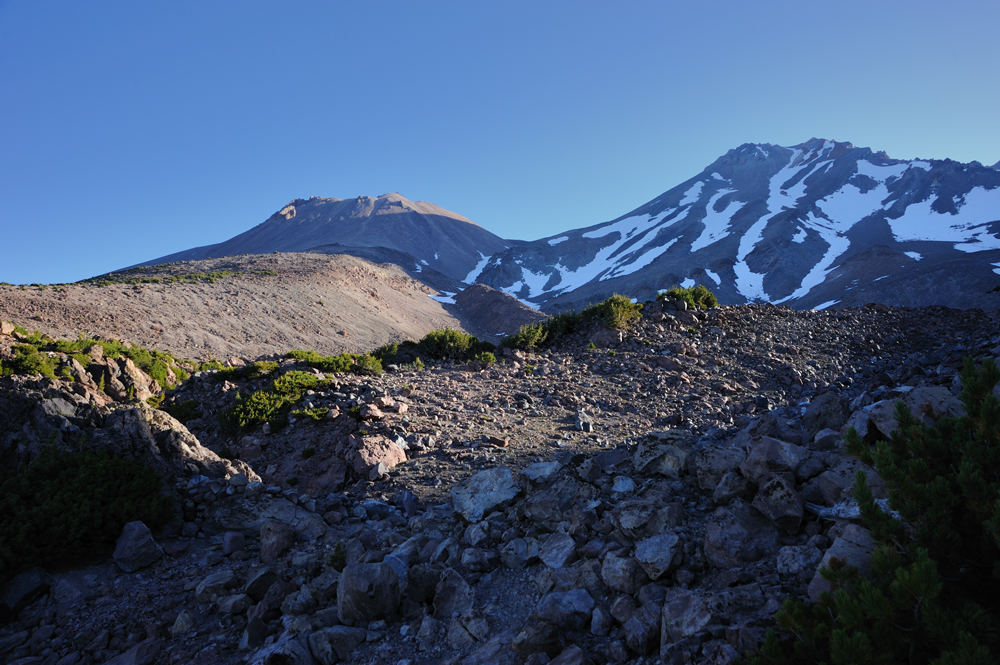
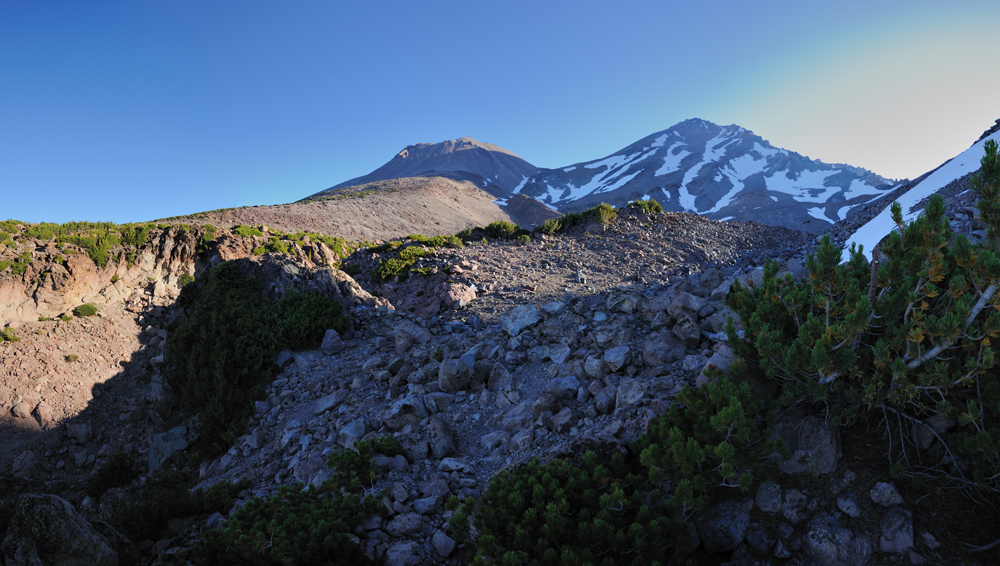
Map reflections.
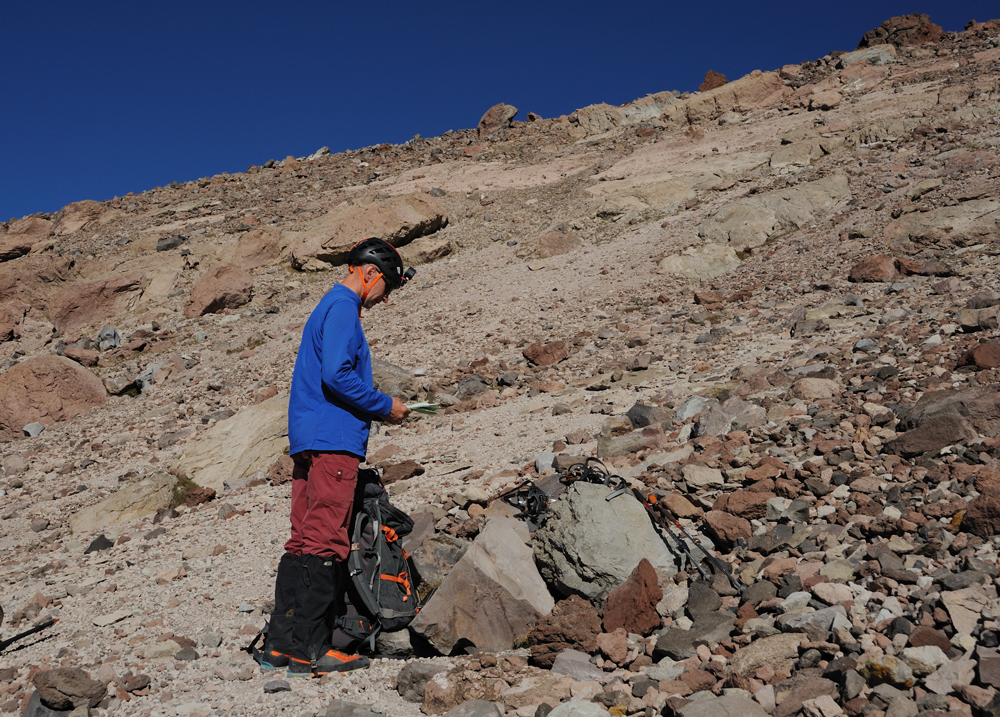
Screes of Shastina are more hikeable than screes of Shasta, probably because Shastina is younger, and glacial period didn’t touch her. However, snow anyway is better than any scree.
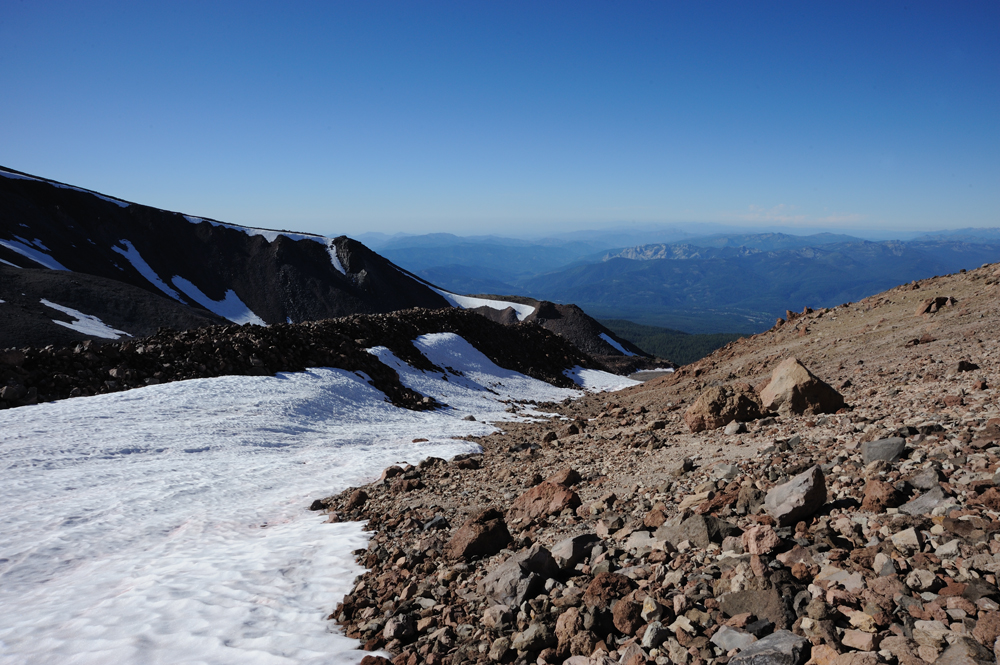
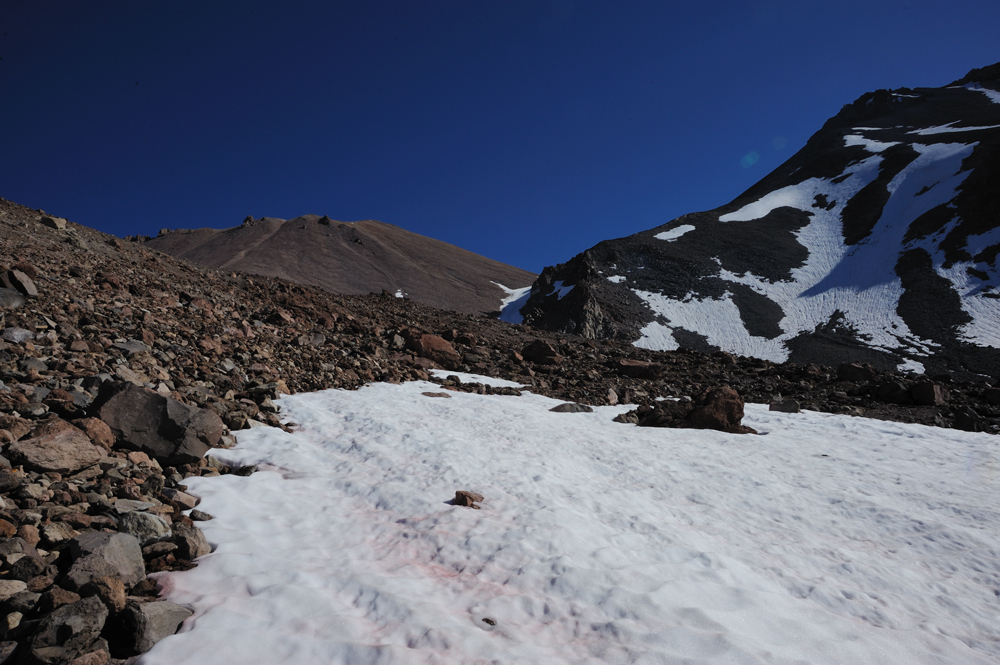
We are going to this gully.
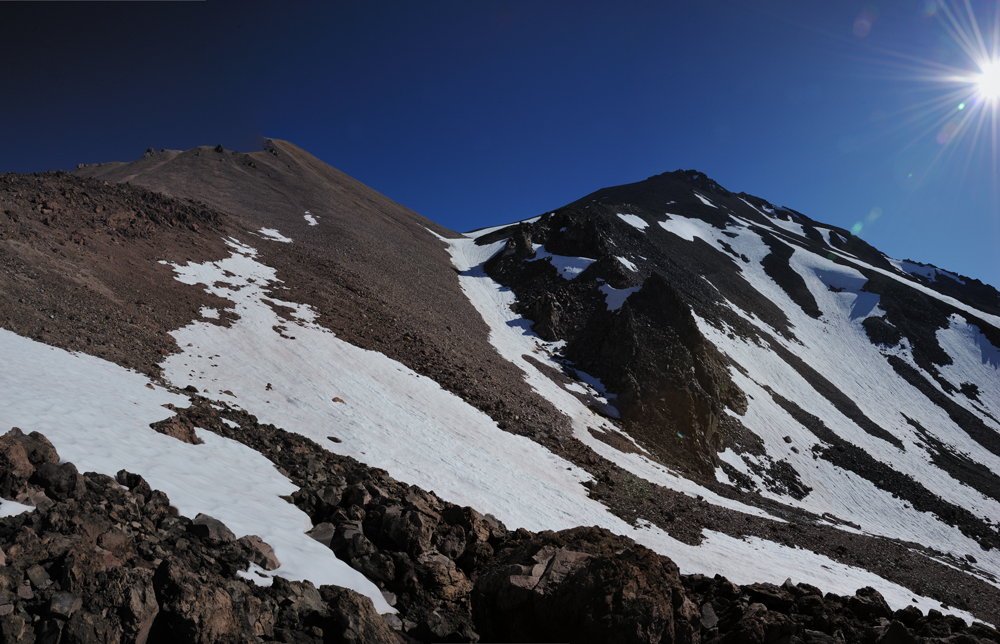
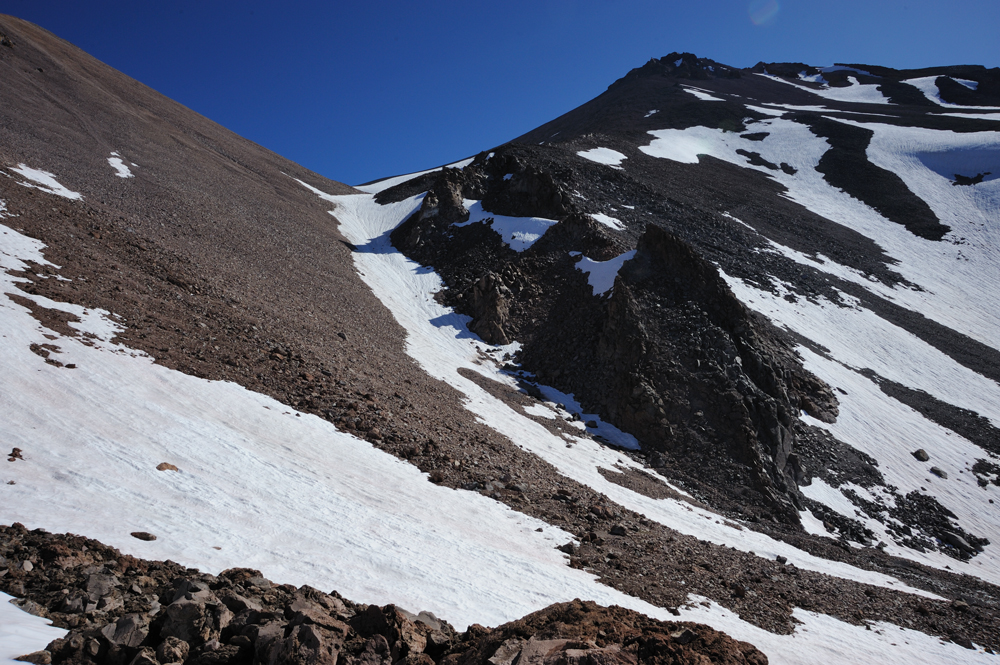
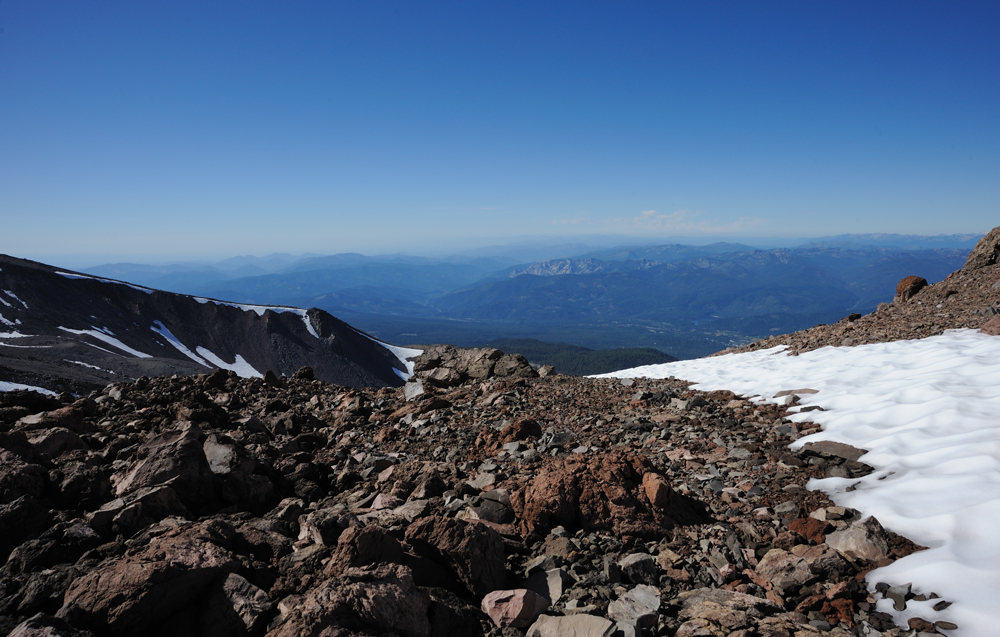
Connecting ridge between Shasta and Shastina is ahead of us.
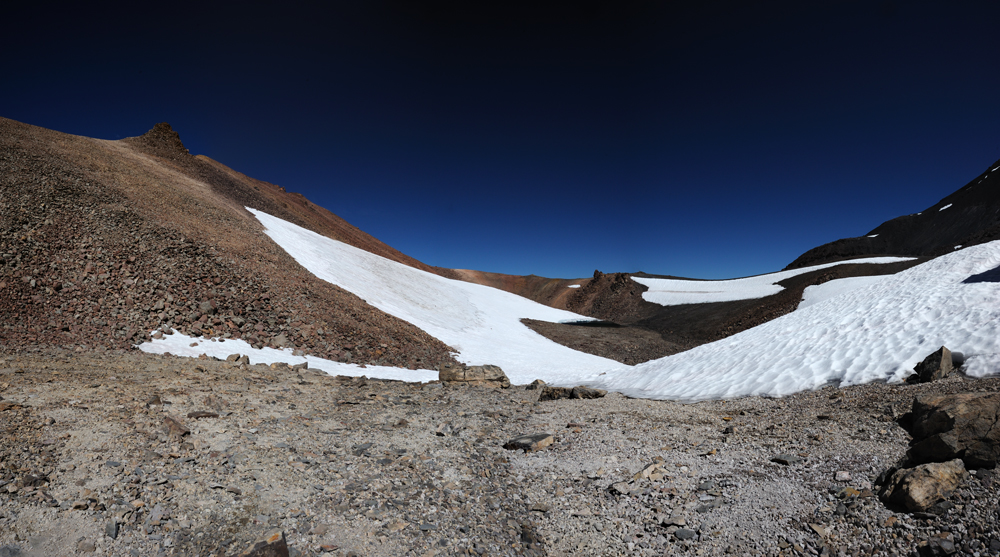
We are on the connecting ridge. There is a lake here. I thought about swimming, but the wind was too cold, so we went to the summit directly.
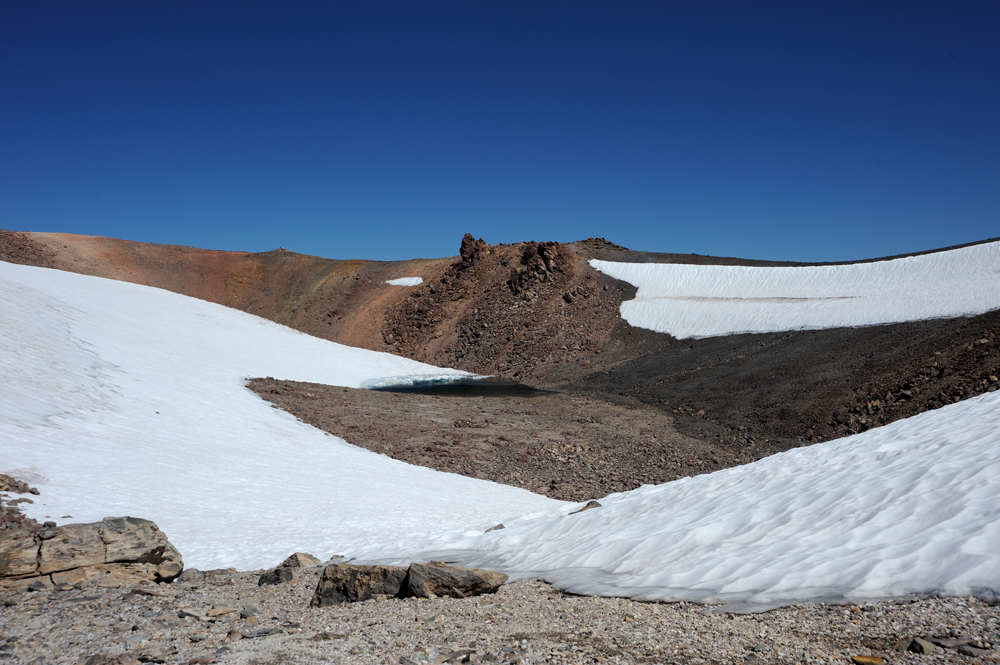
The view of Shastina from Shasta. It looks like a spiral with a hights point on the outer side of the spiral.
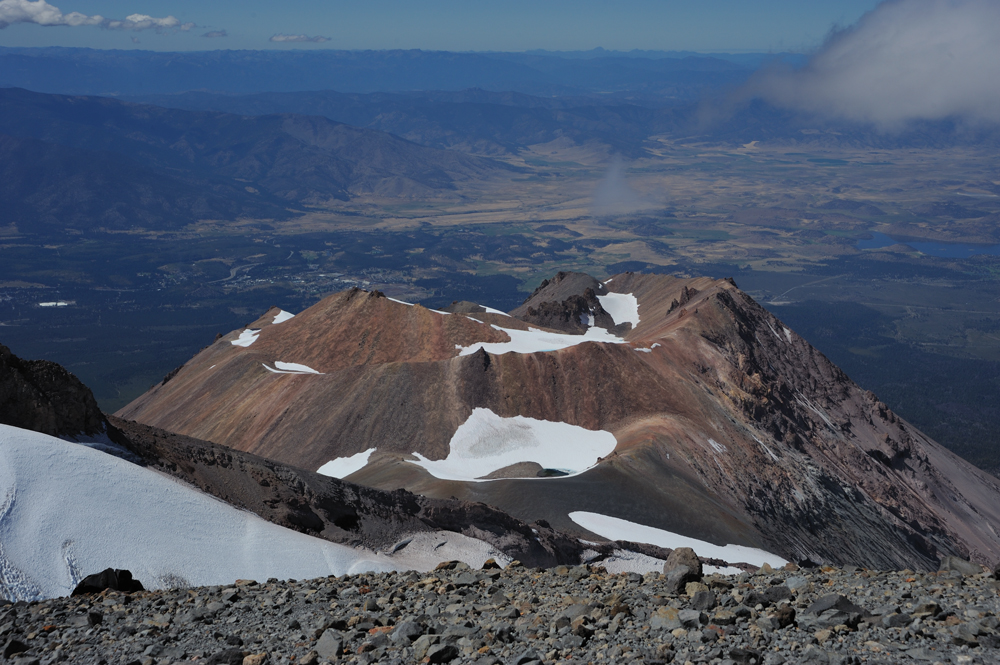
On the outer spiral.
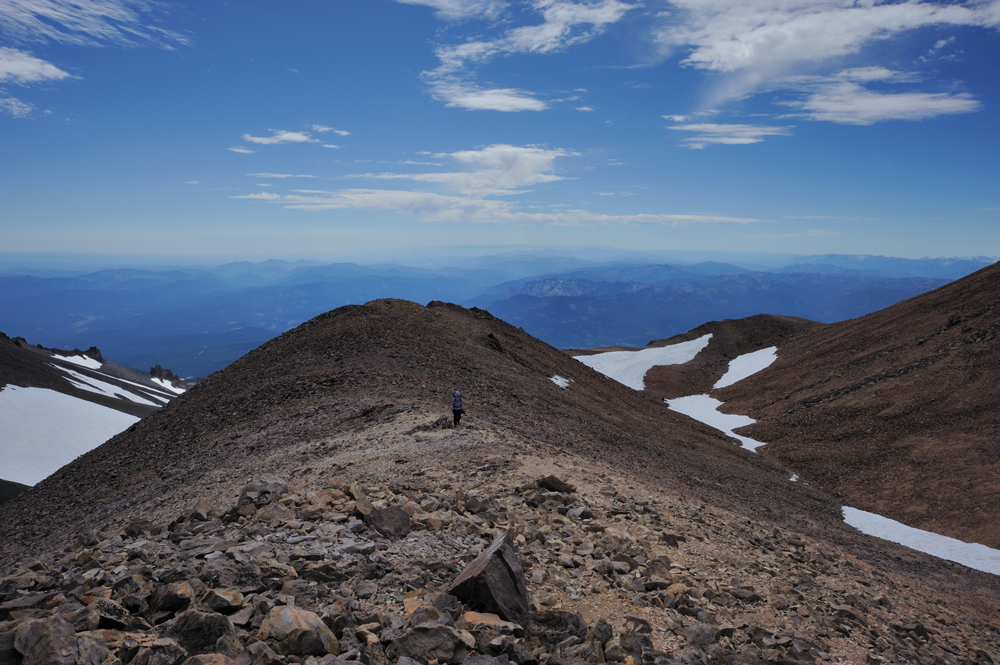
Inside parts.
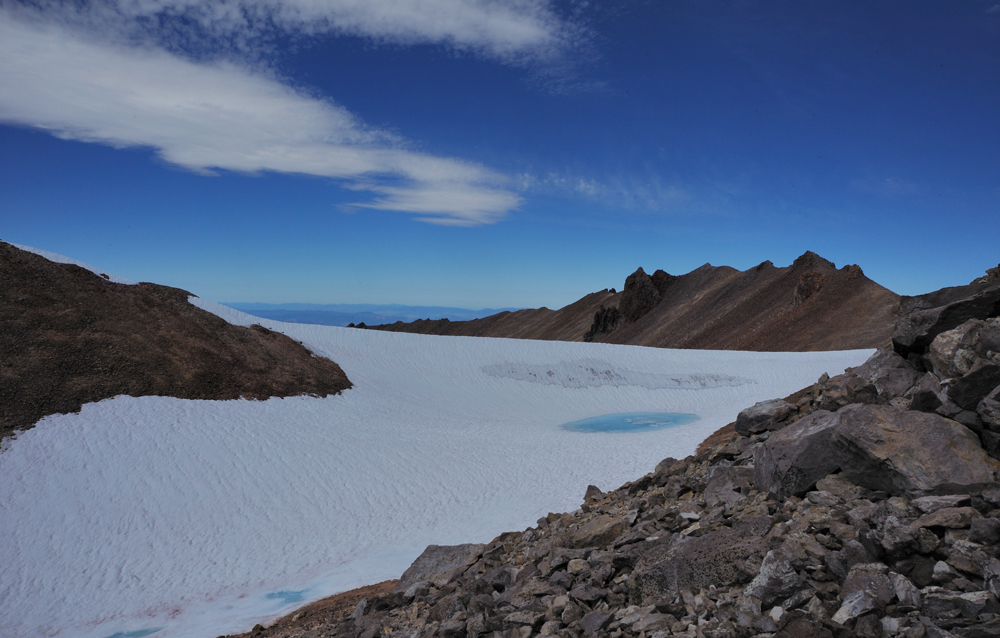
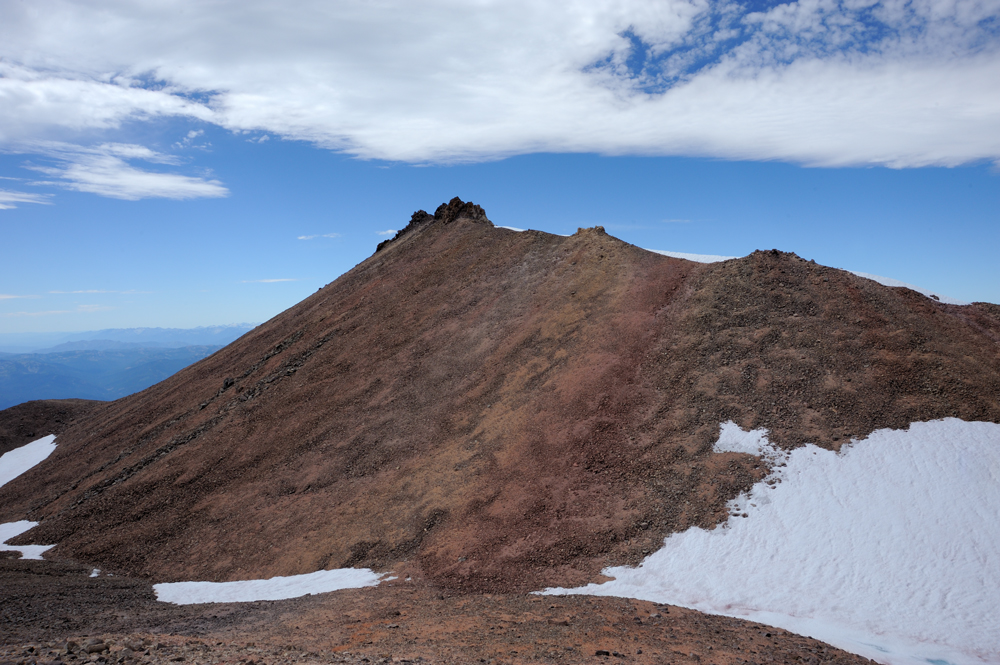
My buddies on the summit.
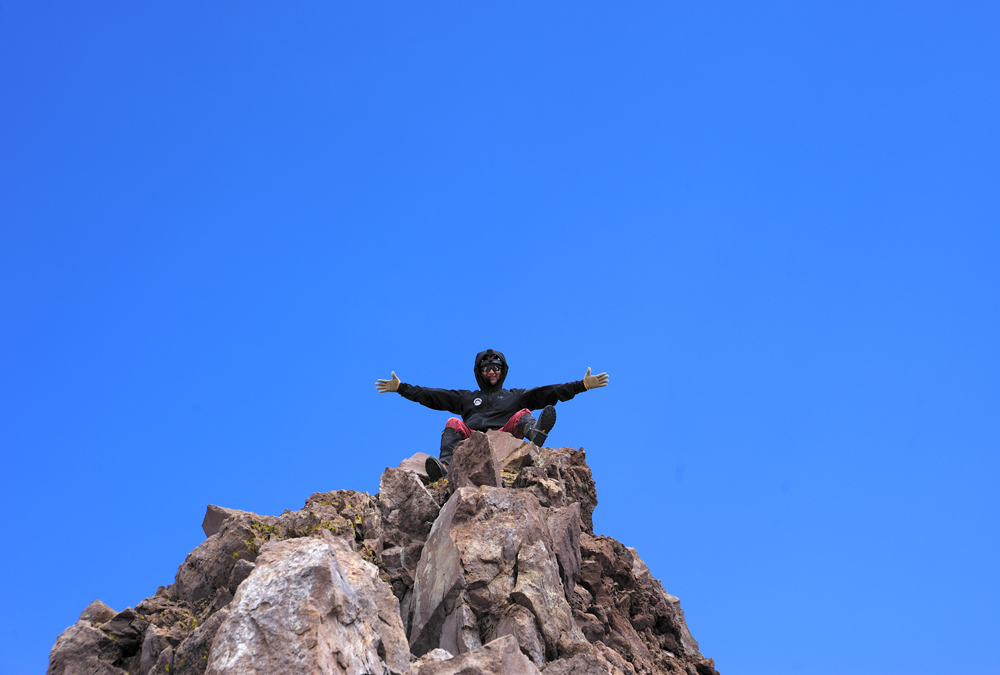
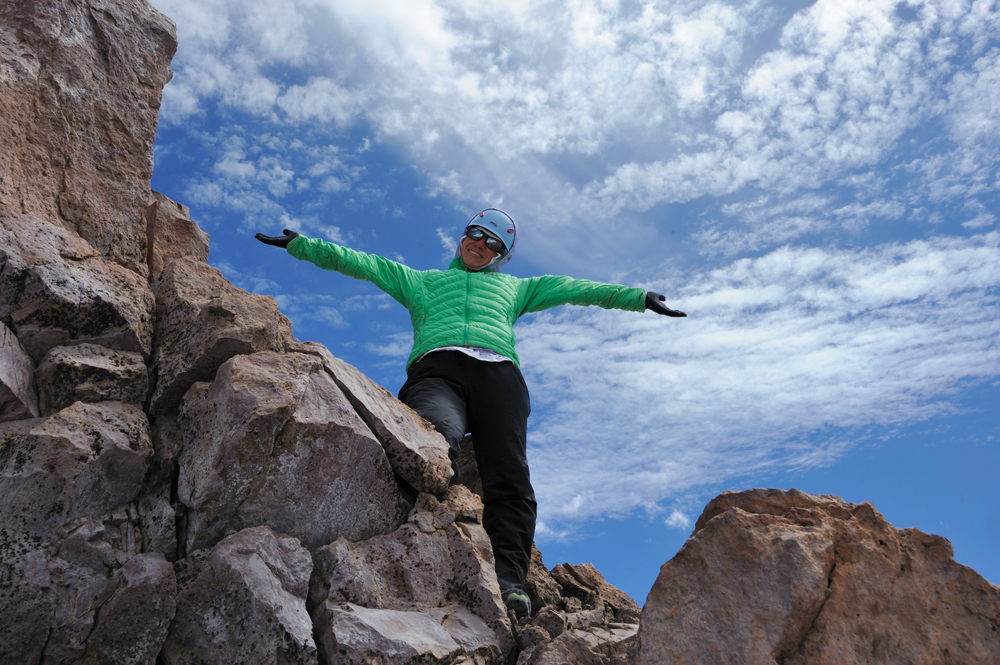
Shasta
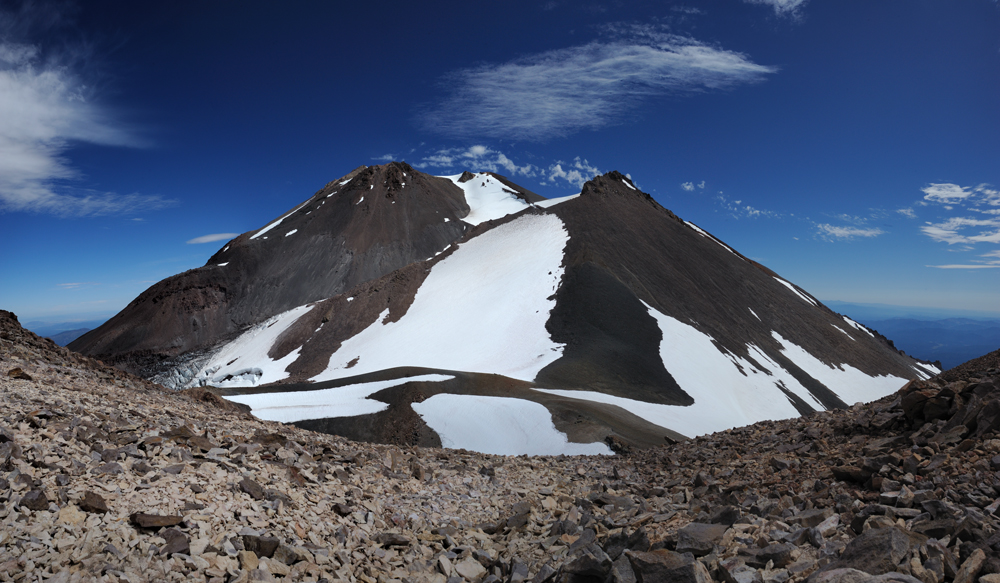
A little glacier
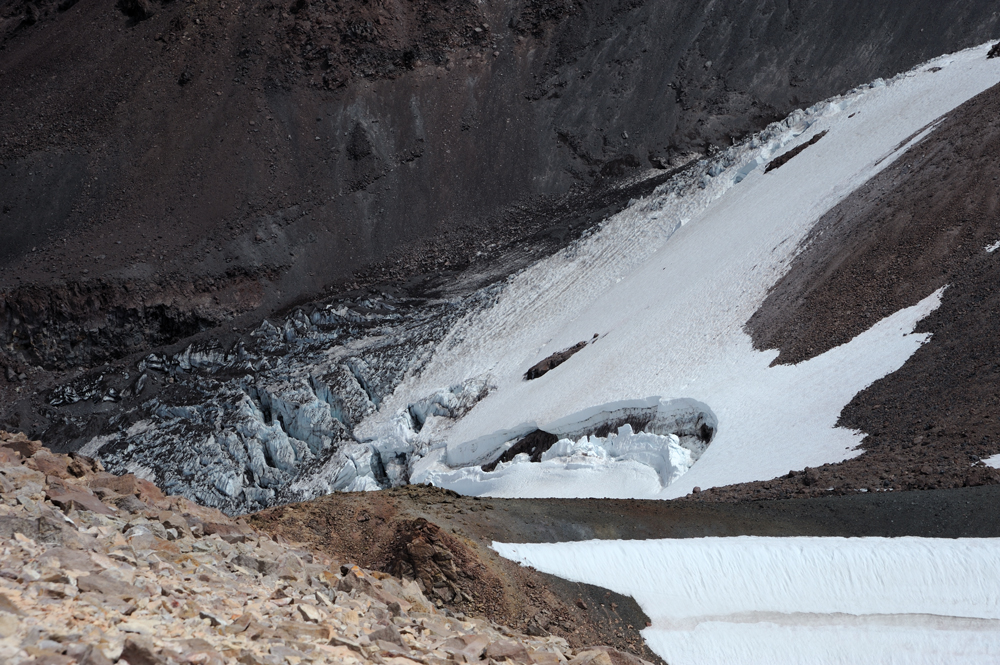
Time to go down.
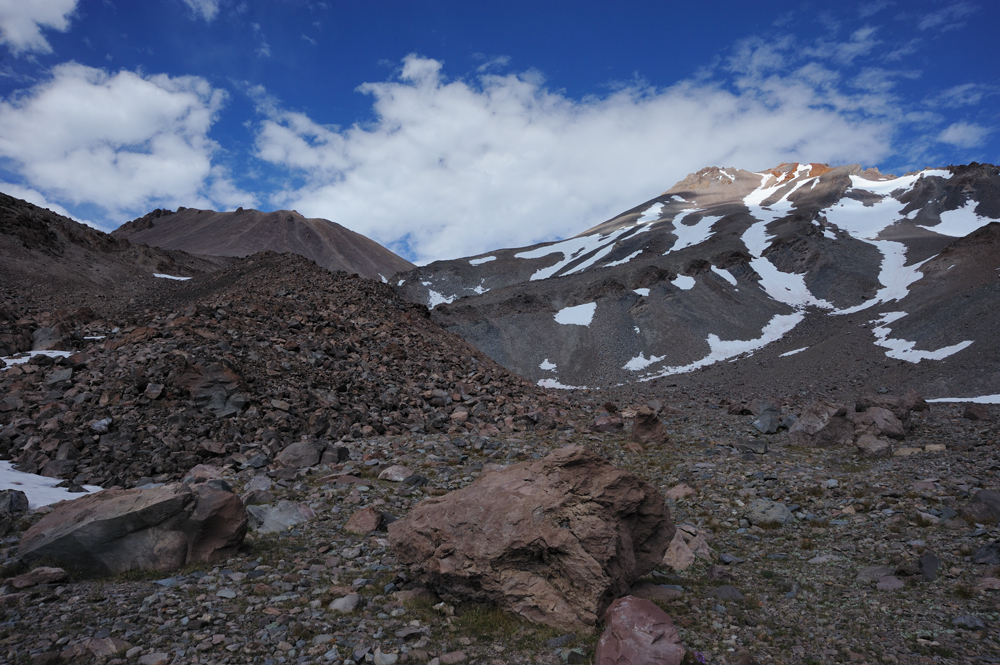
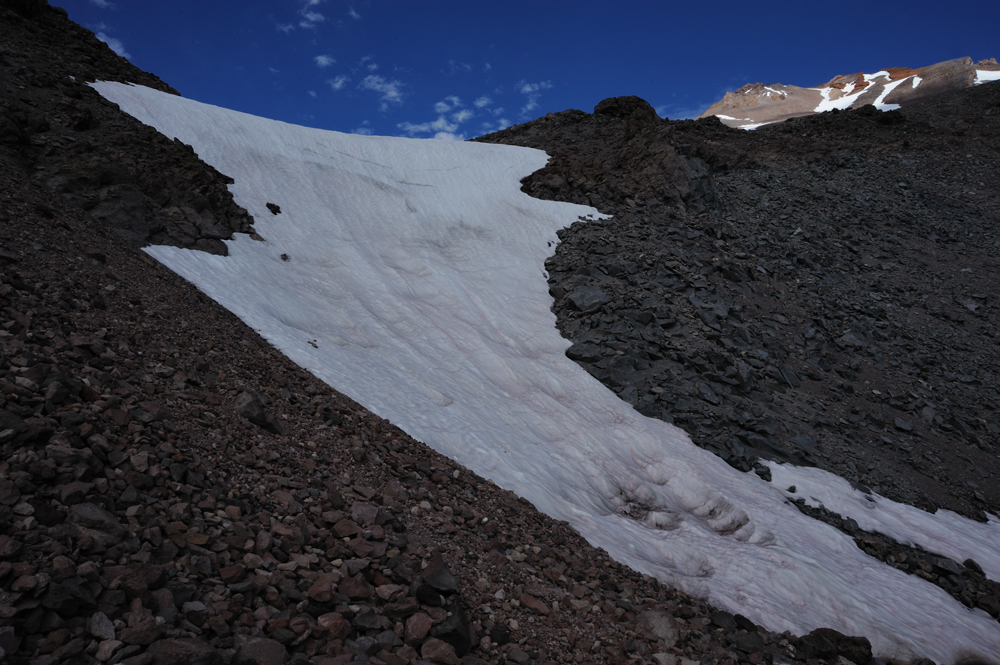
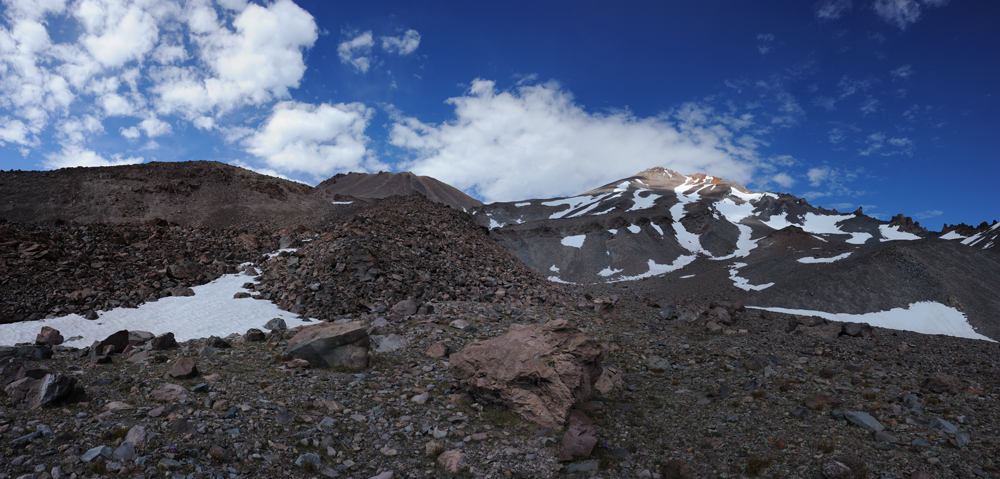
We descend to the camp, had some tea, packed, and went to the car.
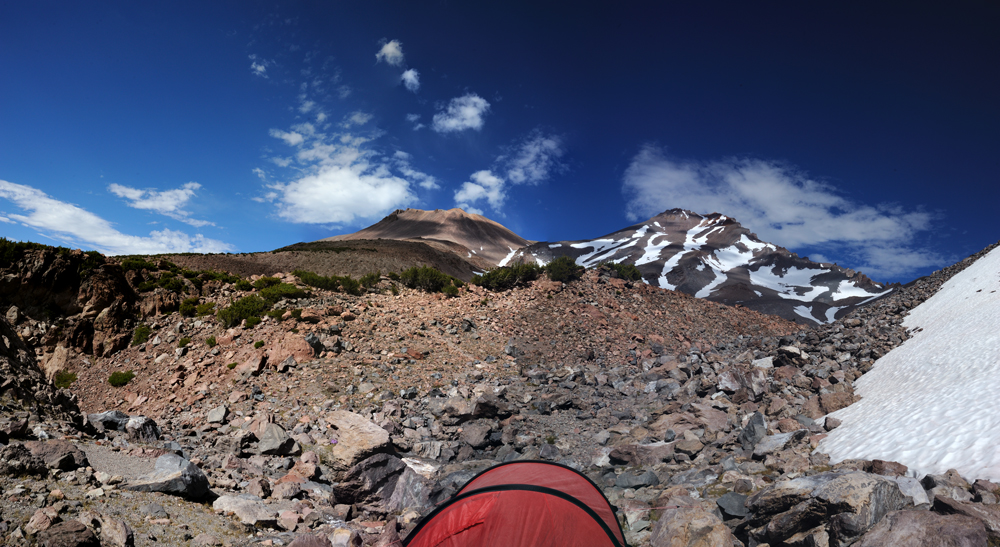
If we will go to Shasta again, it will be done only at snow season. No exception!